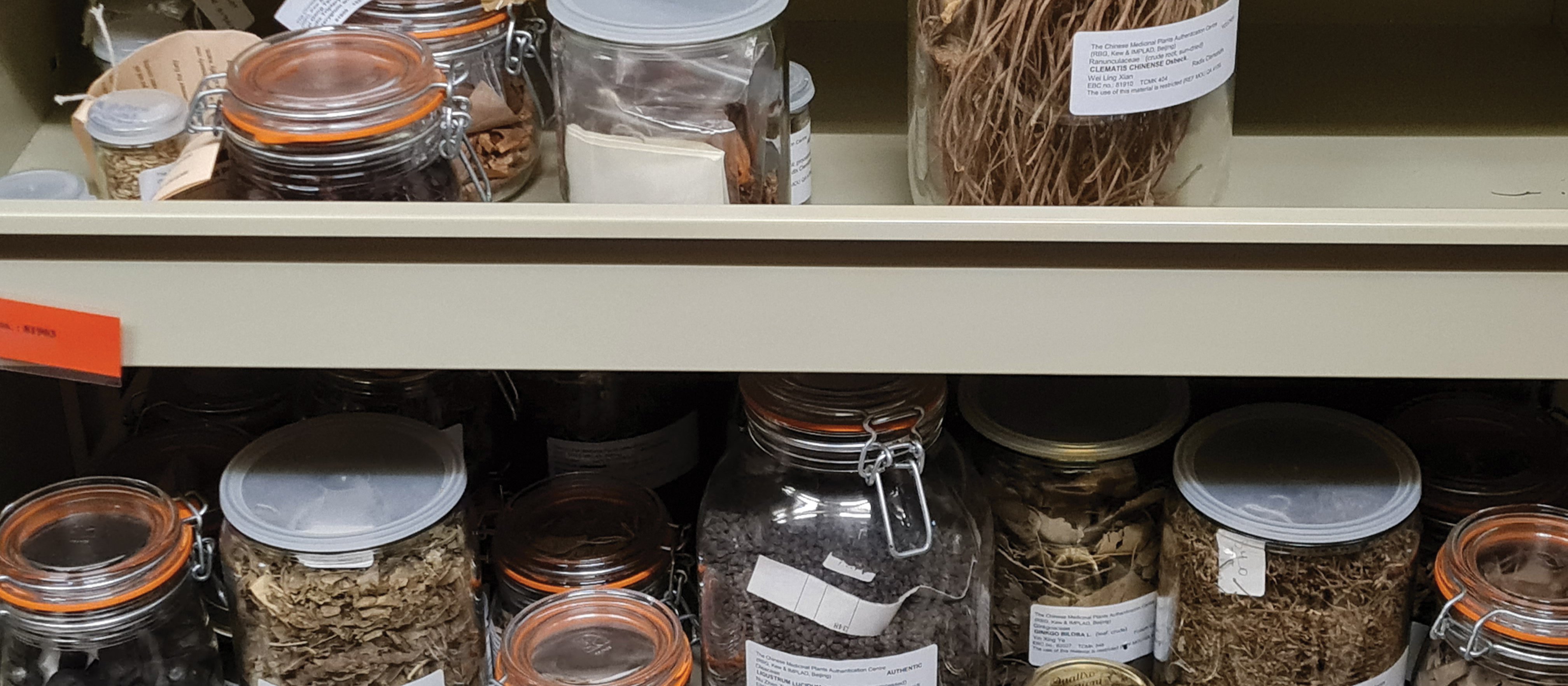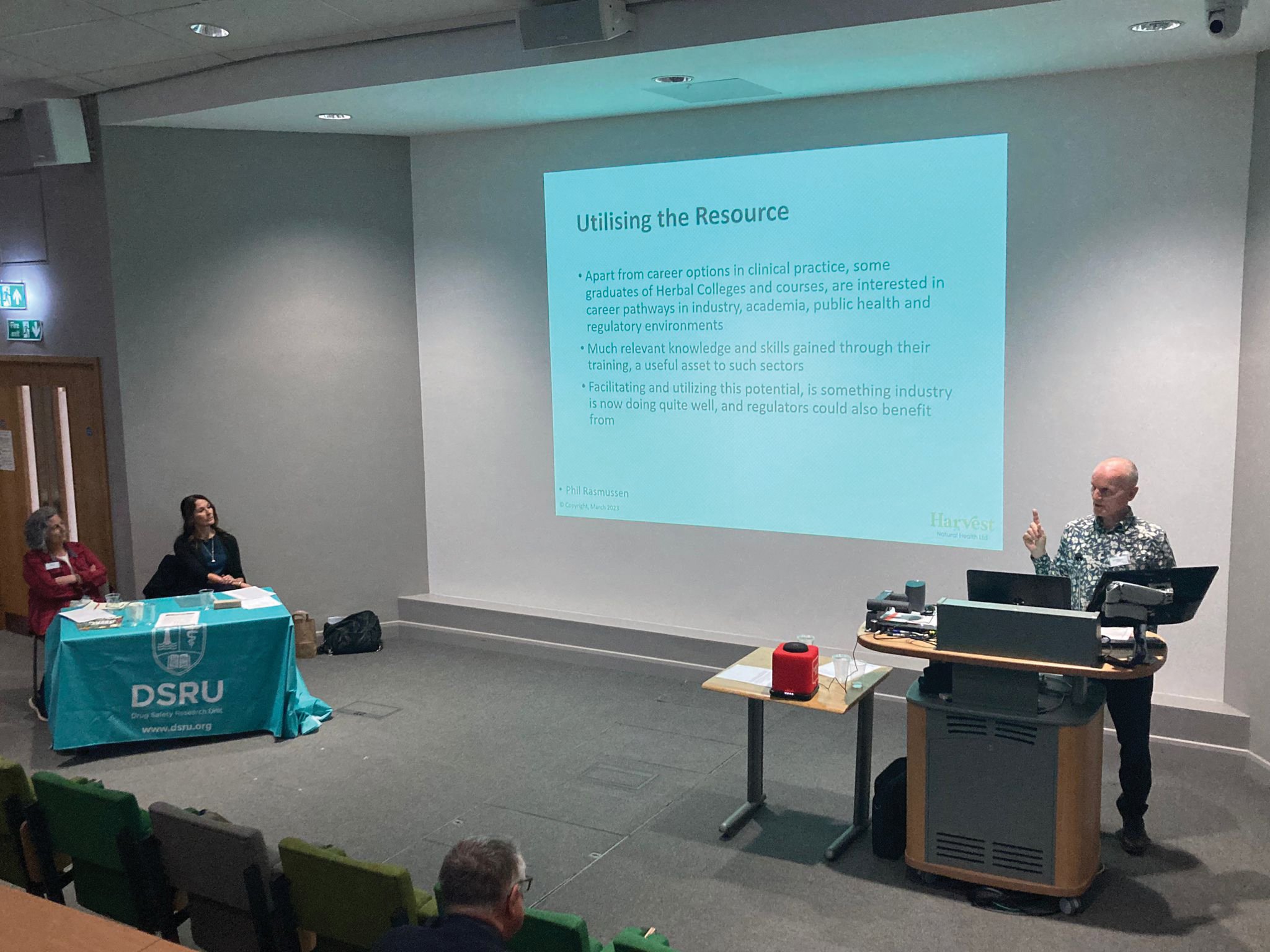Academic pharmacist Nataly Martini highlights the importance of understanding non-Hodgkin lymphoma and pharmacists’ roles in managing this condition
Global pharmacovigilance strategies for herbal medicines
Global pharmacovigilance strategies for herbal medicines

Pharmacist and medical herbalist Phil Rasmussen with the latest thinking on herbal medicines and safety
Many Kiwis took part in the recent conference, Advances in Pharmacovigilance for Herbal and Traditional Medicines, held at the Royal Botanic Gardens at Kew, London, on 13–14 April.1
The conference was organised by the UK Drug Safety Research Unit, with Joanne Barnes (University of Auckland) and Saad Shakir from DSRU as academic leads, in partnership with the Jodrell Laboratory at the Royal Botanic Gardens at Kew and the International Society of Pharmacovigilance.
A great line-up of speakers from around the world gave presentations on a range of pharmacovigilance-related projects. They came from a wide range of organisations, including the University of Oxford, the ISoP, the Royal Botanic Gardens Kew, the University of Auckland, the University of Hong Kong, the American Botanical Council, Mohammed V University in Morocco, the University of Pittsburgh, the Netherlands Pharmacovigilance Centre, the Uppsala Monitoring Centre, Procter & Gamble, and Natural Health Products New Zealand.
The need to undertake post-market surveillance of medicine safety was highlighted by the thalidomide tragedy in the late 1950s and early 60s. The Yellow Card reporting system was introduced in many countries, including New Zealand and the UK, soon after.
Pharmacovigilance applies to all medicines, including those that are plant-based or herbal in origin. Pharmacists, consumers and companies producing and selling herbal medicines should have an understanding and engagement with the processes involved in collecting and reporting data on adverse events.
Herbal medicines are, however, a complex and diverse group of products. In practice, many countries have more than one regulatory agency (generally responsible for foods, plus responsible for medicines), overseeing their compliance to what is often a rather confusing legislative framework.
Jeff Aronson from the Centre for Evidence Based Medicine at the University of Oxford opened the conference with a historical overview of pharmacovigilance for herbal medicines over the past 2000 years. His talk covered some of the earlier herbal texts and progressed to Meyler’s Side Effects of Drugs, then to the current EU Traditional Herbal Medicinal Product Scheme. This regulates licenced herbal medicines with a tradition of use and enables specific therapeutic claims to be made but requires sponsors to have comprehensive pharmacovigilance systems in place.
Florence van Hunsel from the Netherlands Pharmacovigilance Centre summarised some of the work being done by the Uppsala Monitoring Centre, which oversees the VigiBase database, the world’s largest drug safety data repository.2 About 24,000 Individual Case Safety Reports have been lodged in VigiBase, listing a sole suspected involved herbal substance for which the herbal ingredient is identifiable. Unfortunately, as is also the case for ICSRs involving drugs, most reports received don’t provide all the necessary data (concomitant medicines, dose and duration of treatment, existing medical conditions, for example) to enable a high completeness score. Nausea, pruritis, rash, diarrhoea, headaches, dizziness, vomiting and abdominal pain were the most frequently reported adverse events.
A key theme permeating the conference was the relatively low number of adverse event reports on herbal products received by pharmacovigilance agencies around the world. For many reasons, under-reporting of adverse events to all medicines, including drugs and plant-based products, is a long-standing challenge to medicines safety specialists and regulators globally.
Investigations and research on ways on how this situation could be improved, was a key conference theme. Professor Barnes’ presentation, Towards big data for herbal and traditional medicines, summarised the challenges in collecting data on herbal and traditional medicines and other natural health products (NHPs), and how this was being achieved in different countries. About 0.5 per cent of all spontaneous adverse reaction reports globally are related to herbal medicines. But, in China, they make up about 10–15 per cent (mostly in relation to traditional Chinese medicines, some of which are used parenterally in that country).
Pleasingly, however, the number of reports has increased significantly over the past couple of years. This was attributed largely to the COVID-19 pandemic and an associated increase in health-related social media postings, together with well-resourced post-market surveillance programmes established when vaccines became available.
Interestingly, a significant gender difference exists in the likelihood of adverse events being reported, with reports involving females being around twice as commonly received as those involving males. This may reflect factors such as a greater usage of herbal products by women than men, the types of products used and/or a gender-related greater sensitivity to adverse events.
Kendal Harrison, head of vigilance development at the UK’s MHRA, presented research findings from the WEBRADR project, which monitored social media information on potential harms from medicines, vaccines and herbal products. While just one in a tool chest of methods to source safety information for pharmacovigilance activities, it showed its ability to enhance the amount and type of information available.
Another approach being taken by MHRA is to upgrade the Yellow Card Reporting system to enable a drop-down portal option for NHPs. By acknowledging the differences and specific challenges of herbal medicines and NHPs that differentiate them from drug-based medicines and providing a more specific and relevant pathway to lodge information on the portal, the regulator hopes to facilitate adverse event reporting better.
A short presentation by E Lyn Lee from the School of Pharmacy at the University of Auckland described work being done on developing and testing a bespoke questionnaire on traditional medicines, NHPs and conventional medicines use for New Zealand. The questionnaire incorporated the uploading of product photos by participants as an easy way to obtain formulation details and gather more meaningful data.
Mark Blumenthal from the American Botanical Council gave an interesting presentation on the Botanical Adulterants Prevention Program, a collaboration involving the ABC, the American Herbal Pharmacopoeia and the National Center for Natural Products Research.
The BAPP aims to educate members of the global botanical industry and interested researchers about the proper authentication of botanical ingredients and the detection of adulteration. Fortunately, most documented instances of botanical adulteration have not correlated to safety concerns but seem to have been motivated by economic reasons. These have involved cheaper and not true-to-label ingredients, with the main impact being a possible lack of expected therapeutic activity. BAPP has developed a Best Practices Standard Operating Procedure to assist responsible companies in removing ‘irreparably defective articles’ from the global medicinal plant ingredient supply chains.3
The extent to which such adulteration occurs outside of the US is largely unknown. However, the finding that many Ginkgo products being sold in Australia in 2009 had been adulterated with a cheaper flavonol-containing ingredient that chromatographic methods used at the time – and the TGA had failed to detect – was a wake-up call to Australasian regulators and the industry.4
Rich Boyce from the Clinical and Translational Science Institute and Biomedical Informatics Training Program at the University of Pittsburg, described some of the work his centre is doing to study natural product/drug interactions. This included an approach on selecting and prioritising NHPs for evaluation as potential contributors to such interactions. Priorities were being given to top-selling NHPs, new NHPs, those for which pharmacovigilance centres were reporting adverse events, and where the literature indicated potentially clinically relevant interactions could occur.
Monique Simmonds, the deputy director of science at Kew, spoke about the development and implementation of a new science strategy for Kew to focus and enhance its world-leading science and conservation work, strengthen its position as a global resource for plant and fungal knowledge, and promote plant and fungal-based solutions to current global challenges. The tour of the 7000 sample traditional Chinese medicine plant collection Professor Simmonds provided some of us during one of the lunchtimes, will stay in my memory forever.
Bob Allkin, who leads the Plants for Health programme at Kew, described some of the complexities of scientific botanical nomenclature and how relationships between plants are constantly being revised in light of new chemical and molecular evidence.
European and Australasian perspectives of pharmacovigilance were given by Olaf Kelber (Bayer Consumer Health) and Phil Rasmussen respectively.
In Europe, while trust in the safety of herbal medicinal products had increased since their full integration into the overall pharmacovigilance system in 2001, challenges arise when publications of adverse events in relation to poorly defined preparations are sometimes applied to registered products with quite a different profile. Similar frustrations exist within the Australasian industry, and the importance of ensuring appropriate manufacturing standards and a regulatory environment that provided for this was reiterated.
Concerns were raised by several regulators and academics at the conference that little, if any, monitoring of pharmacovigilance was taking place for dietary supplements as opposed to herbal products classed as medicines, as this was outside the jurisdiction of most regulators. This fact and inconsistencies with how products were classed and coded in different countries are ongoing challenges to pharmacovigilance agencies and companies worldwide.
A good pharmacovigilance system permits the detection and study of adverse reactions and helps anticipate any rare but serious safety concerns
Global pharmacovigilance data on herbal medicines collected to date shows that most herbal medicines ar generally very safe when manufactured to a high standard and used appropriately. However, there are multiple reasons for industry, pharmacists and end users in Aotearoa to report instances of suspected adverse events involving plant-based medicines to the New Zealand National Pharmacovigilance Centre in Dunedin.
Reports of hepatotoxicity associated with a particular Artemisia annua-based product some years ago were almost certainly attributable to manufacturing-related quality concerns. But without CARM having received more than 25 such reports, the product may still be in use, instead of removed from sale.
A good pharmacovigilance system permits the detection and study of adverse reactions and helps anticipate any rare but serious safety concerns. It can also improve the end-user experience and enable valuable data to be gathered that may help better understand and measure product effectiveness.
Public safety and a good pharmacovigilance culture and industry engagement is better achieved when a fit-for-purpose regulatory system and requirements, such as GMP manufacturing and quality assurance systems, are in place.
However, unlike other areas, such as Australia, Canada and the European Union, there currently seems to be no regulatory obligation on New Zealand NHP manufacturers to report adverse events. While responsible and engaged companies, health practitioners and end users are reporting these, developing risk-appropriate and user-friendly regulations for the local industry should be incorporated into the Therapeutic Products Bill. As with the many other specific challenges and unique elements of NHPs in general, proper consultation and a collaborative approach with industry will be needed to facilitate this successfully.
In parallel with such legislative obligations, Professor Barnes reminded us that there is a professional code of ethics obligation on pharmacists and other health practitioners and professionals to report suspected adverse reactions for herbals as well as conventional medicines.
1. McGuigan, K. Producing community pharmacy: Complex performances in a hybrid space [PhD thesis]. Auckland, NZ: Massey University; 2018.
2. Broom A, Broom J, Kirby E, et al. The path of least resistance? Jurisdictions, responsibility and professional asymmetries in pharmacists’ accounts of antibiotic decisions in hospitals. Soc Sci Med 2015;146:95–103.
3. Addison C, Taylor D. The pharmacist as safety net: an interview-based study of the intersecting dependencies between doctors and pharmacists. J Pharm Policy Pract 2023;16(1):40.
4. Bidwell S, Thompson L. GPs, community pharmacists and shifting professional boundaries. N Z Med J 2015;128(1414):19–26.
5. Bollen A, Harrison R, Aslani P, et al. Factors influencing interprofessional collaboration between community pharmacists and general practitioners-A systematic review. Health Soc Care Community 2019;27(4):e189–212.






